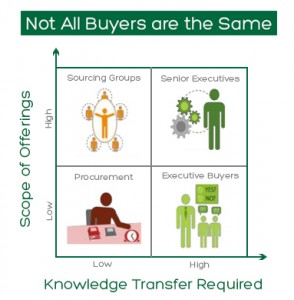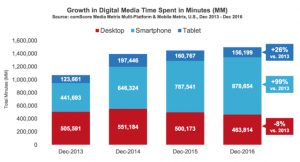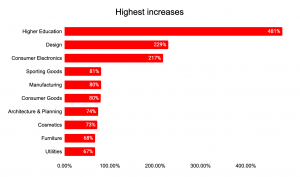September 4, 2016
 Despite the technological achievements that are helping us overcome hiring challenges, the impact of personalization, interaction and engagement can’t be underestimated. Relationships, LinkedIn emphasized at the beginning of 2016, form the cornerstones of business success as the world becomes more digital. “This year’s report,” LinkedIn asserted, “shows a common denominator between the rising trends: relationships.” For that reason, the leadership skills of MSP program managers will become more essential in the growing contingent workforce. The bonds they forge, combined with motivation they inspire, will set the course for the year ahead. Let’s look at some solid techniques we can use to refine these communication skills.
Despite the technological achievements that are helping us overcome hiring challenges, the impact of personalization, interaction and engagement can’t be underestimated. Relationships, LinkedIn emphasized at the beginning of 2016, form the cornerstones of business success as the world becomes more digital. “This year’s report,” LinkedIn asserted, “shows a common denominator between the rising trends: relationships.” For that reason, the leadership skills of MSP program managers will become more essential in the growing contingent workforce. The bonds they forge, combined with motivation they inspire, will set the course for the year ahead. Let’s look at some solid techniques we can use to refine these communication skills.
Talk is Cheap, Communication is Gold
Communication is the true essence and work of leadership. Without it, we can’t articulate our clients’ visions or rouse talent to achieve those goals. Powerful interaction is the core tenet behind Chuck Garcia’s new book, A Climb to the Top: Communication & Leadership Tactics to Take Your Career to New Heights. Garcia is a Wall Street veteran who now coaches top executives on perfecting highly effective communication practices. Yet, these approaches need not be reserved for the c-suite alone. MSP program managers, influential leaders themselves, can benefit from Garcia’s insight and counsel.
Forbes’ contributor Rodger Dean Duncan recently interviewed Garcia about the tactics he uses to help business leaders supercharge their communications. From this exchange come countless pearls of wisdom. Let’s examine how MSP program managers can take advantage of these methods.
The Primacy/Recency Effect
The Primacy and Recency Effects represent the order in which people recall the most meaning from a speech. A preponderance of linguistic studies proves that people tend to remember the first and last things they hear, not always what occupies the center. The concept mirrors the idea of first impressions and the persuasive way they can shape opinions. This is precisely why newscasters utilize a format called the “inverted pyramid.” It’s basically a metaphor that illustrates how information should be prioritized and structured. The most newsworthy items are presented in the opening: the answers to who, what, where, why, when and how? As the story unfolds further, the less critical supporting details follow. Audiences always remember a powerful opening statement.
The Recency Effect shows that listeners also respond to the last sentiments expressed by a speaker. By understanding these mechanics, MSP program leaders have the opportunity to launch bold conversations that leave lasting impressions with hiring managers, talent and suppliers. A powerful call to action at the end, embodying the Recency Effect, inspires further action. The simple process involves asking, “What do I want my audience to do, think and feel?” Adding language that’s professional yet provocative, surprising and memorable can make a big difference.
This technique can apply to nearly any situation. Let’s say you’re welcoming new workers to an onboarding orientation. Dazzle them with a punchy statement about the importance of the client company and the role of talent in supporting it. Perhaps you oversee a program like SpaceX. Your first address could be: “Did you know SpaceX isn’t just pioneering private space travel? They’re designing systems that will save the environment and eventually help to colonize Mars. Your work will get them there. Your contributions will be remembered by later generations who one day inhabit the Red Planet. With every task you perform, regardless of how small you believe it to be, I want you to recognize and seize your role in advancing humankind.”
Appeal to Emotions Over Logic
The old adage in sales is that people buy on emotion and justify the decision with logic. MSP program managers and their supplier partners live in a world increasingly dominated by metrics, analytics and data. However, opening your communications by appealing to emotions will grab your audience’s attention and help them accept your recommendations with the ensuing facts.
As Garcia asserts in his interview, “Scrap the conventional pleasantries and dull introductions. Launch into something bold and deliver the unexpected to establish rapport and build instant credibility.”
For the sake of example, let’s imagine you’re trying to bring a new supplier into a program where the client has become overly comfortable with the existing base. The hiring manager may be reluctant to rationalize or augment the supply chain. Using an “emotions first” approach, you’re more likely to provoke change by making the client feel enlightened and energized with the possibilities.
You could open the discussion with a statement such as: “I’ve managed enterprise programs like yours for years, and your company remains one of the most progressive I’ve seen. And (September 12, 2016), I discovered a staffing provider with a model just as fresh and disruptive — completely aligned to your values. It’s no wonder clients in your space are starting to pursue them. I’ve spoken with the executives there. A partnership would help meet your goals in half the time. You could reduce your base, trim your costs and outperform your competition rapidly — before they engage Supplier A themselves.”
After you’ve intrigued the client, you can sway them to make a decision by presenting facts: the supplier’s method, technology, success stories, scorecards and more.
Embrace Humility and Support
The most effective leaders, in Garcia’s vast experience, are those who dedicate themselves to supporting the talent behind an organization’s success. As top MSP program managers already know, a distant and top-down authoritarian approach seldom produces incredible results. More often than not, this style leads to dissatisfaction, disengagement, supplier or worker turnover, and eventually a weakened employment brand.
Keeping staffing partners and talent productive requires engagement, openness, vulnerability, honesty and a sincere sense of commitment. When every participant in the program is passionate about the mission, their devotion ensures unparalleled results. Here are couple of best practices.
Priorities
At the beginning of the relationship, establish a clear sense of purpose, direction, support and connectivity.
- Instill a detailed understanding of how each supplier and worker contributes to the overall value and success of the organization’s mission.
- Present a comprehensive list of cascading priorities and strategies to achieve goals together.
- Define each participant’s responsibilities and your own accountability as the manager of the process.
- Solicit input regularly and offer transparent communications about objectives, opportunities and challenges.
Performance
As we’ve learned from countless studies on the new generations of talent, they want and appreciate honest feedback. Unfortunately, the mounting responsibilities and time constraints placed on managers can limit employees’ access to this information. MSPs and staffing professionals have the time and commitment to offer ongoing, constructive communication.
- Hold regular performance meetings to recognize achievements, course correct identified weaknesses, gain new insights for optimizing the program, and more.
- Work with staffing partners to develop dynamic and interesting ways to coach talent and help them develop their skills.
- Remain close to suppliers and workers, make opportunities to keep them engaged and informed, and provide training when necessary.
Progress
Dejected full-time employees lament that “career development” is a phrase they hear during their job interviews and never after. For others, these “development” plans come in response to corrective action. Exemplary staffing professionals are always focused on the evolution of their talent. That may sound strange, given that contingent workers perform on fixed assignments; yet as employees of staffing curators, they have the opportunity to transition into increasingly lucrative and challenging roles as their experience and abilities mature. By collaborating with staffing partners, elite MSP program managers can help champion this progress.
- Unite with staffing providers to outline and execute dynamic development plans for talent, including near and long term goals.
- Allocate time and resources to invest in your teams.
- MSPs and staffing curators, because of their integrated approach to talent management, can draw on a larger set of available resources and tools that concentrate on providing talent with new learning opportunities.
- As opposed to an organization’s internal stakeholders, teams in an MSP program have one big objective to throw all their efforts and attention behind: taking care of top talent to maximize the quality and performance of the client’s organization.
Powerful Communication Skills Lead the Way
Bold, powerful interactions are the hallmarks of memorable leadership. Although people may forget what we say, they rarely forget how we made them feel. A vested and engaging commitment to relationships will drive performance to new levels each day, resulting in an increasingly superior quality of candidate, unrivaled client satisfaction, and a united talent acquisition front led by MSP program managers and staffing experts.
Business & Finance Articles on Business 2 Community(61)






